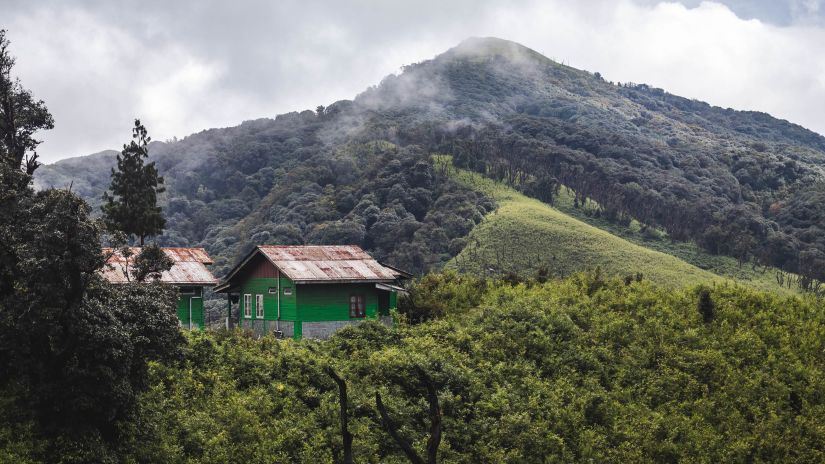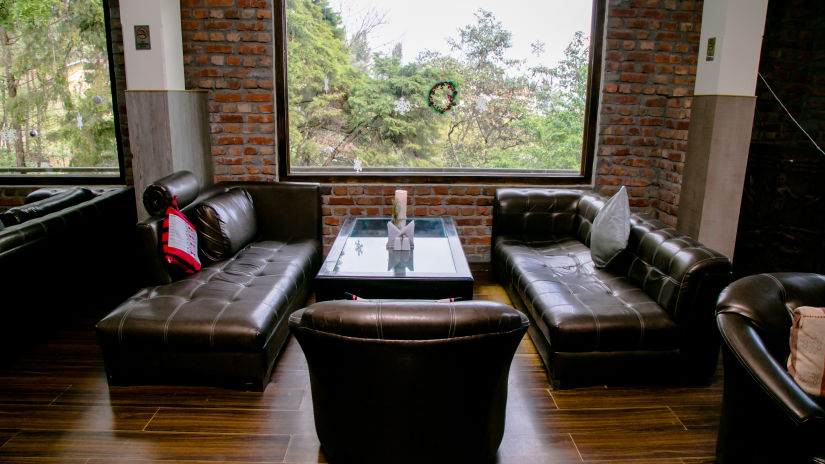- Ayurvedic Guide to Summer Wellness
- Top 10 Ayurvedic Foods for Summer Health
- Living the Water Conservation Way
- Why you need a Ayurvedic solace in Kerala ?
- Beyond the Room: How Niraamaya Champions Local Experiences
- A Tale of Two Indian Spots for Valentine's Day
- Unlock a Stress-Free Life: 6 Reasons to Choose Wellness Retreats
- From Ayurveda to Modern Medicine: Hibiscus Across the Globe
- The Ayurvedic Wellness : 7 Tips to Transform Your Health
- A Year of Self-Care: The Ultimate Guide to Rejuvenation Holidays
- Experience the Hornbill Festival: A Cultural Marvel
- How Nature-Friendly Rooms Enhance Sleep Quality
- Wellness Through Design
- Beyond the Boardroom: A Guide to Corporate Wellness Success!
- Kannur: A Wellness Oasis in Kerala
- No-Fire Cooking: A Sustainable and Delicious Culinary
- A Diwali Trip Guide to Kerala
- Ghee, An Ayurvedic Superfood for Auspiciousness and Nourishment
- Unlocking the power of Better Sleep: A Path to Wellness
- Pomegranate Juice: 10 Health Benefits of the Red Pearl Fruit
- The Ayurveda Way: 10 Power Foods for Diabetes
- Roar for Tigers: The world needs more species!
- Experience Niraamaya Retreats Private Residencies At Least Once!
- Why India Is Our New Favorite Place for Medical Tourism
- 5 Reasons to Visit Niraamaya Retreats in Monsoon
- Complete Guide to Surviving Monsoon Depression with Niraamaya
- Embrace the Healing Power of Karkidaka Chikitsa
- Embracing the Kaleidoscope of Love
- Discover the World of Teas and Tisanes
- The Jackfruit Biryani Phenomenon: Why Everyone is Talking About
- From Limiting Beliefs to Limitless Possibilities
- From Chaos to Calm: Celebrating Stress Management Month
- Small Steps, Big Impact: Celebrating Earth Day at Niraamaya Well
- Make a Splash this Summer in Niraamaya’s Private Pool Villas
- Niraamaya Wellness Retreats’ Mussels Ulathiyathu
- Locally Sourced, Freshly Prepared: Exploring Zero-Mile Cuisine a
- Finding Your Zen: Ayurvedic Techniques for a Calmer Mind
- From Farm to Table: Embracing the Slow Food Movement
- Spice Up Your Seafood with Niraamaya's Squid Pepper Recipe
- Plan your next Wellness-cation with Niraamaya Retreats
- Navigating the World of Ayurveda
- Bitter but oh-so-good: Pavakka Thoran
- Unleash Your Inner Wellness Warrior
- The Ultimate Relationship Booster
- Uncovering India's Gems: A Zodiac-Based Guide - Part 2
- Uncovering India's Gems: A Zodiac-Based Guide
- Top Destinations to Visit in 2023 with your Partner
- Safety First: A Guide to Solo Travel for Women
- The Secret to Niraamaya’s Signature Travancore Fish Curry
- Capture the Holiday Magic With Niraamaya's Festive Offerings
- The Ultimate Guide on how to end the year in style at Seychelles
- Athirappilly 101: A beginner's guide on how to have an unforgett
- 7 Reasons Why Stress Management is the Key to a Healthier Life
- Check out the Health Benefits of these 10 Ayurvedic Herbs
- Start Your Wellbeing Journey with These 6 Simple Tips!
- Express yourself via the Art of Journaling
- Leverage cutting-edge tech for advanced wellness
- Boost your post-COVID recovery with Niraamaya
- Make A Positive Change With Our Simple Summer Swaps
- Five tips to help you maintain good health during summer
- 5 Must-Do Wellness Tips In 2022
- Vegan vs. plant-based food: All you need to know
- Retreat into the picturesque hills to take a luxurious break
- Our tips to tackle Technostress
- Functional Medicine: The holistic and natural approach
- 8 Ways to Overcome Stress at Work
- The Rasayana Therapy – Relax and Rejuve Program
- Yoga packages at Niraamaya Wellness Retreats
- Why you must visit Vizhinjam
- 10 ways to enjoy the Niraamaya Retreats as a family
- Dishes you just can’t give a miss at Niraamaya’s Backwaters
- The Art of Now
- How Ayurveda keeps your skin glowing
- Experience the power and beauty of southwest monsoons
- Feel the perfect harmony of earth’s elements
- How to experience the magic
- Nine gingery health benefits
- This Goa Will Fill Up Your Soul!
- Thiruvananthapuram: Top attractions
- Hotel Rooms Just Got 10% Cheaper With GST Rate Cut
- Food Traditions: The Onam Sadhya
- Niraamaya Retreat’s Executive Weight Loss Program
- Photogallery: The luxury suites at Niraamaya Surya Samuda
- Best of the backwaters
- How Panchakarma will help deep cleanse your body
- And we have scored big once again!
- Luxury By Design
- Niraamaya Retreats wins Best Hospitality Architecture Award 2019
- Niraamaya Spa wins the prestigious Luxury Ayurveda Spa Award
- Gourmet offerings at Niraamaya Retreats Backwaters & Beyond
- Creating Sustainable Livelihoods
- Healing Wellness Breaks at Niraamaya Backwaters & Beyond
- 10 reasons why Ghee is known as India’s very own super-food
- Cuisine with a wellness soul
- Kerala’s culinary traditions come alive at Niraamaya Retreats
- The Golden Spice
- Finding Shangri-La
- Everything you want to know about Yoga’s origin and evolution
- All Things Wild and Beautiful
- Tropical Paradise in God’s Own Country
- Healing Holidays for the Mind, Body and Spirit
- Floating over a forest canopy in a verdant green oasis
- A superlative spa, set amidst a lush forest
- An ancient village with horn houses and terraced fields
- Niraamaya Retreats: A unique blend of luxury hospitality
- Cruising Lake Placid
- Why Ayurveda could be your miracle cure?
- An ode to Kerala’s Tharavadus
- Lakeside Luxury at Niraamaya Retreats – Backwaters & Beyond
- Breaking through with ONV’s Leadership Retreats
- Ayurveda: When all you have are three days (or five)!
- Kovalam adjudged ‘India’s Best Wellness Retreat’
- Wellness in Nature: It Heals, Restores and Revives
- Changing Wellness Trends of 2021
- Ghee, An Ayurvedic Superfood for Auspiciousness, Nourishment, an


Exploring Kohima could throw up several surprises such as an old village, the second largest in Asia, that holds several secrets to Nagaland’s fascinating past. Discover the hill state’s many charms with Niraamaya Retreats Aradura, Kohima.
Have you ever heard of a village with a population of one lakh people, the second largest in Asia, which snuggles within deep valleys, is ringed in by high mountains and yet, is as ancient as the Japfu mountain range that envelops it?
This is Bara Basti (Big Village) or the Kohima Village, an age-old settlement of the Angami people, a major ethnic tribe native to Nagaland. While parts of the village have now merged with Kohima, a rather large section of the original settlement still exists and is a major tourist attraction.
This old part of town, scattered across picturesque hilltops and forested ridges above the main Kohima city, is home to four clans that follow their own system of governance. Travellers enter Bara Basti through an imposing traditional wooden gate with elaborate carvings of warriors, hornbills, and Mithun (wild buffalo) sculptures and horns. Mithun is considered a symbol of prosperity in this hill state and you will find its image, carvings, statues and horns in almost every home and building.


Walk down the twisting lanes of Bara Basti, on narrow village roads, past an array of lovely wooden houses set to the backdrop of the mountains to understand traditional Naga lifestyle and culture. The Naga homes have stone monoliths in front of them that the Angami people raise as memorial to the brave acts of their ancestors. The homes of the society elite — the rich, the landlords, the big farmers and hunters — have horns of the Gaur or Mithun, crisscrossing each other, installed on the rooftop to indicate the status of the family that lives there. Even a family that has hosted two major feasts for villagers in times of good fortune earns the right to install the horns on their homes. In fact, the horn homes of the Nagas are considered an architectural heritage and have been documented in government archives.
The families that are really high-up in status have homes with majestic facades carved out of wood panels and decorated with symbols of Mithun, as well as skulls of other animals that the family’s ancestors have hunted in the past.
Every Bara Basti home (as do homes across most of Nagaland) has a huge basket granary in the verandah that holds the grains and a trough that is used to make rice beer. Finely woven baskets, husking trays of bamboo and large mats for drying paddy are found in almost every home. The woven baskets hold grains, clusters of vegetables and onions, local garlic, as well as chunks of pig fat.
The tall, good looking Angami people either till their fertile terraced fields on the hilly slopes and in the valleys around their villages, or rear livestock. They are also considered expert weavers. When there is no work in the fields, they weave for long hours on their simple looms, interlocking the horizontal threads of the weft with the stretched vertical threads of the warp to create the striking white, red and black band patterns, called Loramhoushu, on their clothes. Often, they also wrap fabrics patterned with black, red and yellow bands, called Lohe, around their waist. In winters, the Angami people add a black weaved shawl called Ratapfe to their ensemble.
The villagers live in a cocoon, discussing local politics, growing their own food in the backyard and in the fields spread across the hills, and celebrating local festivals as a community, a rarity in a rapidly urbanizing India.
Bara Basti is among India’s last-remaining heritage villages in which long-celebrated customs and graceful old homes tell the story of a people whose ancestors have probably been here for as long as those huge old Rupo trees from which they draw the tannins used to colour their vibrant black and red robes.


The Retreat
Niraamaya Retreats Aradura, Kohima is a getaway to the mysteries and beauty of the ancient pastoral and tribal land of Kohima and Nagaland. Explore Bara Basti with an experienced guide on a trail that the retreat organises for its guests. After an eventful walk across the world’s second largest village, unwind at the retreat. Enjoy the view of the mountains and abundant greenery from its glass windows as you sip your favourite tipple and savour a traditional Naga meal.